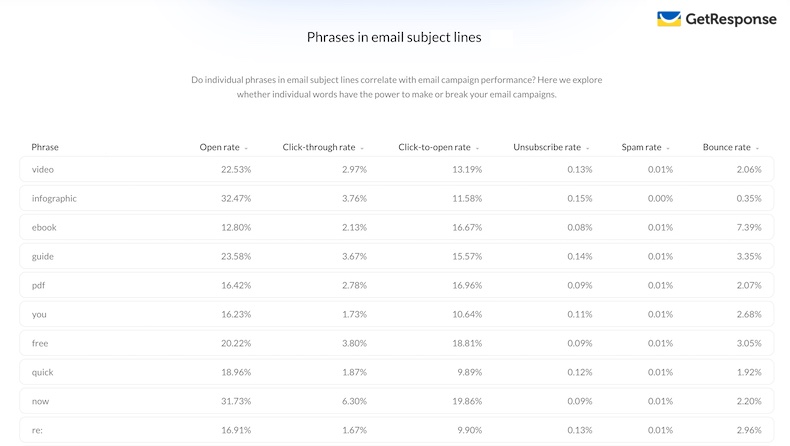How to Handle Public Expectations When They Are Constantly Changing
Long-term changes in public expectations have shattered the status quo and given rise to several important social movements, including Fridays for the Future, MeToo, Occupy, Black Lives Matter, and Occupy Wall Street. Many people are concerned about fairness, wealth inequality, discrimination, and environmental sustainability. The growing demands for greater accountability, equity, fairness, and sustainability are overwhelming business executives.
Some business leaders choose to stay put, carry on as normal, and trust that their organization will be able to weather the storm if things continue as they are. Others decide to focus their personal and professional efforts on defense tactics that will protect their business from the asteroids that are traveling in their direction.
What is the best way for a leader to balance these conflicting needs? It is essential to implement strategies that make the link between external dangers and fundamental business principles and capacities in order to increase corporate capacity while avoiding asteroids heading your way.
Demonstrate your company’s integrity by effectively monitoring and communicating how your corporate values align with commitments and actions. Be explicit about what “walking your talk” on environmental sustainability or diversity or social justice looks like in practice. How will you know you have manifested your intended organizational values? Implementing values in practice requires ongoing attention and is far more challenging than the making of bold promises. Integrity—the alignment of values, commitments, and actions—is the aim. Pay attention to any gaps in this alignment. This work can bring together leaders, build resilience, solidify the core, and of course, enhance credibility with internal and external stakeholders.
Make sure your organization's basic principles guide how you react to changing demands. While it is important to monitor how your peers and rivals respond to public requests for social justice, diversity, or fairness, every company has different principles. Leaders are urged to create plans that are based on these distinctive fundamental beliefs. Ask: What drives our company to care about climate change, diversity, social justice, or any other pertinent subject in question? to start this crucial dialogue within your organization. What part do we play in finding solutions?
The capacity of customers to trust a firm will be impacted by a lack of transparency, which is vitally essential for efficiently managing service expectations. Businesses that are honest in all circumstances can guarantee that customers have confidence in their suppliers and great experience. This means that a customer support agent should be honest about seeking advice from other team members if they are unsure of the best solution to a problem.
Although optimism is crucial for a pleasant customer experience, employees must also remain pragmatic about potential solutions. Support specialists can estimate how a specific ticket will be resolved and the time commitment that will be needed by being familiar with corporate policies, the complexity of specific issues, and the workload of their team members. Although it can be unsettling to inform a client that a problem will take longer than anticipated to fix, it is more crucial to be realistic than to set unattainable standards.
There are many ways businesses can optimize their customer experience strategies. However, the first step to delivering excellence is to manage expectations effectively from the get-go.
Author Bio: This is an article by Milica Vojnic. She is a Digital Marketing Executive at Wisetek & Wisetek Store, supporting some of the world’s largest IT companies with their used and excess IT equipment.
Top Remote Work Tools For Great Productivity and Efficiency
More and more businesses are shifting toward remote work to provide the employees with a better work-life balance. Not only this but according to a report by exploding topics, 57% of employees believe that they are more productive when working remotely. However, understanding the needs of your offsite team and effectively connecting with them might turn out to be a challenging task.
Remote teams need robust remote software to facilitate collaboration and communication to efficiently face the challenges related to time zones and managing processes. Integrating with the technology in your remote working environment makes it super convenient for remote teams to collaborate. Furthermore, these top remote work tools also help to effortlessly hire many new talents from different places to participate in your team.
Communication and real-time collaborations are the most highlighted concerns of remote working. Hence, it’s crucial to find the best suitable tools that enable your team to be on the same page. A report from TrustRadius says that almost two third of businesses are increasing their investment rate in web conferencing software. These tools and software help to provide access to the employees ensuring the success of the project.
Below, I have outlined some of the amazing statistics that you must know about the rising demand for remote working tools.
- The collaboration tools helping the digital workspace are expected to generate over $17B by 2025. (Apps Run The World)
- 23% of employees feel that virtual meeting tools prove to be more effective while working remotely. (Owl Labs)
- Global end-users spending on cloud-based conferencing is estimated to reach almost $5 billion by the end of 2023. (Gartner)
- 67% of businesses have increased their investment rate on web conferencing tools. (TrustRadius)
Top Tools for Remote Work
Getting the right productivity tool serves as the key component to getting things done effectively. And, choosing the right tool is even more important when you have a distributed team. Here, I have mentioned some of the Top tools for remote work that will help you strengthen your team's efficiency and productivity.
Best Tool For Employee Recruitment and Onboarding: Birbal

Birbal is my personal favorite video interviewing software that helps organizations to streamline their complex and lengthy hiring processes. Onboarding new employees remotely include one of the biggest challenges that businesses face today. A survey by Workables New World of Record says that 37.4% of employees feel that remote onboarding and training involve a leading challenge when hiring virtually.
However, software tools like Birbal help your hiring process with faster sifting, screening interviewing, and hiring. The tool allows businesses to create and manage multiple job descriptions using its amazing preset templates simply from a single platform only. Moreover, we all know that hiring in person might increase the chances of favoritism towards one candidate even unintentionally.
But with top AI tools like Birbal enables you to hire the best new talents by using its bias-free decision-making feature. With Birbal, you can invite bulk candidates while automating the entire interviewing process. It provides smoother employee management internally. Not only so, but it also helps you to cut down the major onboarding costs and time.
Features:
- Provides preset questionnaires with easy access
- Mass interview scheduling
- AI Video Interviewing
- Natural language processing-based verbal assessment
- Data-backed analysis and reports
Benefits of using Birbal:
- Data-driven and actionable insights help to make a wise decision
- Provides secured cloud servers
- Allows candidates to give interviews based on their availability
- Analytics based screening
Best Tool For Team Collaboration: Slack

The internal communication of every organization includes a significant part of its success. Hence, a tool like slack can do wonders for opening up communication within the team. The best tool for effective collaboration allows its member to be more transparent in reaching the entire team for more personal and emotional topics.
The collaboration tool allows you to record voice or video messages directly within the Slack Desktop App. With Slack, you can organize your work life quickly while simplifying the work for every team member. The tools provide remote workers with a perfect virtual office environment while removing the biggest communication gap that a distributed team might face.
Features:
- Video message feature
- Private channels for smaller conversations
- Search functions
- Enables app integrations
Benefits:
- Offers a free version as well
- Faster operations
- Easy content sharing
Best Tool For Communication: Zoom
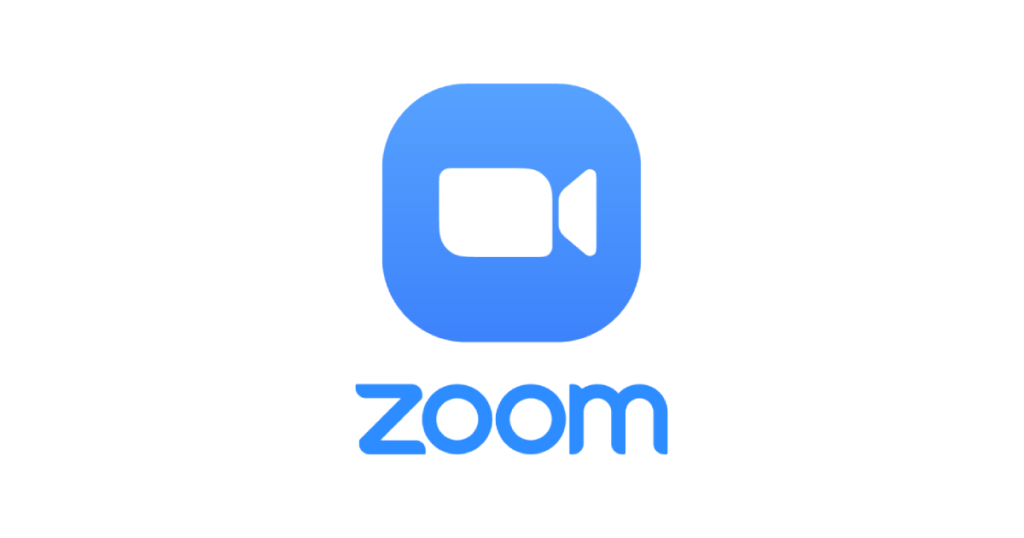
You must have heard about Zoom which is one of the most popular tools for video calls and screen sharing. No doubt, the tool is a perfect video conferencing enabling users to effectively share their screen or portion of their screens with anyone.
It provides some amazing features like a virtual whiteboard that makes it easy to demonstrate a point. The tool makes communication effective with its HD voice and video. Furthermore, it enables members to message each other privately for smaller or direct interactions.
Features:
- Enable to create your own custom background
- Allows videos to appear over PowerPoint slides
- Video filter ad affects
- Built-in collaborations
Benefits:
- Provides free version
- HD video and audio
- Provides end-to-end encryptions for meetings
- Provides transcripts
Best Tool For Project Management: Asana

Asana provides one of the most powerful and free project management tools, ideal for small to medium teams. The feature that makes it such a powerful tool includes its easy and smooth learning curve for all skill levels. The tool provides every team member with the option to view projects in the list.
Unlike any other project management tool, Asana, helps teams collaborate and track their projects effectively. Furthermore, Asana helps your team members to feel more proactive with the things they need to do every day. It allows its users to become more decisive and confident with their task completion by supporting their end goals.
Features:
- Enables to track progress
- Expansive integration
- Allows collaborations
- Custom calendar
Benefits:
- Easy to use
- Provides focus mode
- Pop up notifications and reminders
Best Tool For File-Sharing and Cloud Storage: Google Drive

Google Drive tool for file sharing and cloud storage has quickly caught up offering more space with its free accounts. Unlike other storage options that don't provide enough upgrade options for additional storage makes Google Drive is a better pick for a digital workspace environment.
The file hosting service by Google Drive makes it super convenient for employees to save all the files (whether it's an image, a video, or a long PDF) in the cloud. Hence, making your file sharing process easy and accessible on almost every device. Integrating with Google Drive also reduces the risk of file loss due to any failure with the hard drive. Users can simply use a folder to organize anything in the app.
Features:
- Offers team collaboration
- Advanced search options
- Enabling the staring option to important files
- Provides custom links
Benefits:
- View all types of files
- Work offline
- Can easily convert PDFs to Docs
Best Tool For Productivity Monitoring: Todoist
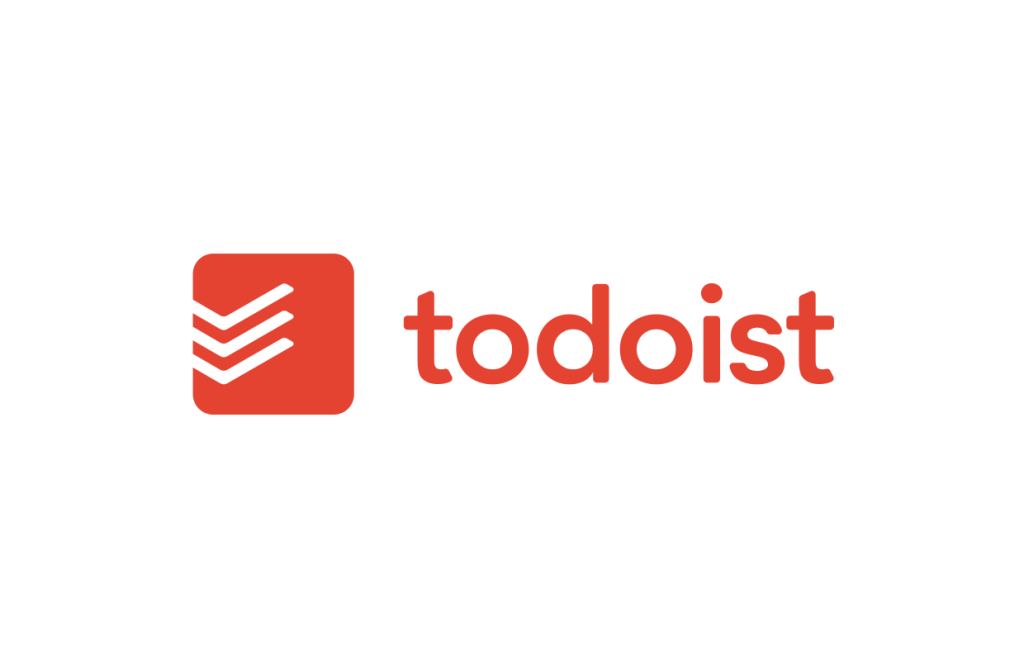
While working remotely it becomes difficult to monitor one's productivity effectively. Hence, tools like Todoist provides a simple yet powerful to-do list that helps employees to organize their work lives effectively.
Other tools like Evernote, Microsoft-To-Do, and others are either too feature-loaded or too less, making it hard for users to manage and monitor tasks. Where Todoist struck the perfect balance of features and usability. Not only so but this tool also enables the users to easily access the app while providing the best suitable free-to-use app.
Features:
- Track logins
- Enables sharing and collaborations
- Search option
- Real-time synchronization
Benefits:
- Intuitive user interface
- Provides offline support
- Cross-platform availability
Ending Thoughts
Remote work is rising, and organizations must need the most effective tools for collaboration and productivity. As technology continues to improve remote working will definitely be in the demand in the future. A report from PwC says 86% of the finance and insurance will prefer to work remotely. Not only this but a study from Gartner says that around 80% of employees would recommend working remotely to their fellows.
The market has many tools for starting out their virtual setup depending on what your requirements are. I wanted to provide you guys with the list of best tools that might do wonders for solving the challenges faced by remote workers. Hence, this post intends to provide you with an overview of some of the best remote tool that helps organizations to increase their productivity.
Author’s Bio
Atul Naithani is an SEO Executive at CronJ, a Software development Company that helps businesses to develop web apps, mobile apps, blockchain solutions, and other custom software based on their needs. Atul is experienced in digital marketing and SEO.
I Run A Remote-First Company — Here’s How I Make Sure Remote Work Isn’t Taking A Toll On Working Moms
"Can you give me some tips on how to balance work and motherhood?"
"How do you create a WFH culture that doesn’t leave women out in the cold?”
I get these questions a lot and more frequently in the last couple of years when remote work really took off. I'm the CEO of a 100% remote company, meaning that my team is distributed across six countries and three continents. I'm also a mom of four, and I’m keenly aware of the difficulty of juggling a demanding career with the needs of a growing family.
This is why I’ve worked hard to make it easier for the working moms in my company to integrate their family life with their professional life. At this point, we have 60+ employees, and nearly 60% of our team — and 50% of my executive team — is made up of mothers.
Here's how I make sure remote work empowers the moms I work with:
Offer flexible work schedules
Encourage your employees to be honest about what works for them. There isn’t one perfect schedule or work setup for everyone. Instead of imposing your personal preferences on employees, help each individual figure out what their optimal work style is by asking questions like "What days and hours work best for you? What works well for your family? Where does the work need to get done?” Then step back and let them try it out. You'll probably find that they surprise you with just how much high-quality work they can produce when given the right circumstances.
Destigmatize asking for help
It's important that your employees know they can count on the support of their managers and peers.
At my company, we aren't shy about asking for help. We understand that no one is perfect; everyone has weaknesses. When someone is working on something outside their specialty, they are encouraged to reach out for help. It helps everyone learn new things and level up their skills. It also sends the message that no one should be afraid to make a mistake. And, really, if you mess up, chances are it won't be the end of the world.
Create guidelines for how people should communicate
When employees are in the office, you can see when they're in meetings, when they take their lunch breaks (and sometimes what they order), and if they’re having a bad day. But when an employee is remote, it can be harder to tell how (and what) they’re doing.
If you don't set guidelines for communicating, like when people should be answering email and DMs, then things become chaotic. How long do I need to wait before I bother this person? When is it okay if I text someone instead of calling them? What does an "urgent" email look like?
At my company, we've developed common expectations and communication guidelines, and all of our team members know what is expected of them. We’ve laid out the rules about when to check in with direct reports, how to get their attention on Skype, and what kind of language they should be looking for from us (and vice versa).
Is it easy? Not always, and certainly not at the beginning. It takes effort and commitment from all sides. But making sure that everyone knows how to communicate effectively has helped create productive remote relationships.
Give people time for non-work banter
It's important for people to feel comfortable when they’re working from home. We keep the lines of communication open between employees by having informal/non-work chatrooms and special interest groups that let us communicate easily with each other and talk about interests, hobbies, and our personal lives. While remote employees miss out on many in-the-moment conversations, I've found that these opportunities for bonding help my team feel connected even when they're not sitting next to each other in an office.
By staying involved in our team members' lives outside of work, it's easier to be there for them when things get tough or when they need someone to listen to them during difficult times—which is especially important.
Don't underestimate the power of empathy
A lack of empathy is one reason why women are given fewer opportunities or judged more harshly at work. Women are often still treated as if they’re newcomers on the job, no matter how long they've held a position. When you think about your new hires, make sure you don’t fall into this trap yourself. If you see someone getting overlooked or passed over for opportunities due to something outside of her control (e.g., children), make a point to say something.
Speaking of empathy: one thing we’ve done in our company is create a group chat for moms where we share relevant articles and resources about balancing family life with remote work, check in with each other, and talk about our adventures in parenting.
Review your company policies and incentives to ensure that working moms are taken care of
What does your maternity leave policy look like? How about your vacation policy? How do you handle emergencies, say, if a team member’s child is feeling poorly? These policies all communicate whether or not people are valued, so make sure they reflect the way you want to treat your employees.
Every mother I know is constantly doing too much. With children, parents, partners, extended family members to take care of, chores, and work… there just isn’t enough time in the day. And COVID pushed the struggle to balance career aspirations and family responsibilities to the limit, forcing many to leave the workforce.
As an employer, I know that my team members are often juggling multiple responsibilities. They want to excel at their day job while being dedicated parents, spouses, friends, and community members. And if we don’t support them in this balancing act, we risk losing talent.
I’m proud of our progress as a company, but we still have room for improvement. I know we can do even better in creating a work environment where women feel safe, supported, and empowered to learn, grow, and thrive without sacrificing their personal lives.
ABOUT THE AUTHOR

Catherine van Vonno is the President and CEO of 20four7VA, a trusted remote staffing company. She oversees the overall growth and success of the company, leads the short and long-term strategies, and manages the company's finances.
AI yields 30% of revenue at tech-savvy companies: Accenture

Dive Brief:
- Companies savvy in the use of artificial intelligence (AI) generate on average 30% of their revenue from capabilities such as facial recognition, advanced scenario planning and translating speech-to-text, Accenture said describing survey results.
- Still, only 12% of companies rise to the rank of AI “Achievers,” Accenture said, underscoring that “most organizations are barely scratching the surface” of what is possible with AI. “It’s an opportunity facing every industry, every organization and every leader,” Accenture said. “There is incentive to move quickly.”
- The proportion of companies that make the most of AI will rise “rapidly and significantly” to 27% in 2024 from 12% today, Accenture predicted, adding that such companies outperform their peers in achieving sustainability goals and improving customer experience.
Dive Insight:
A growing number of CFOs are using AI to streamline operations and cut costs across a range of budget items, according to Accenture and findings in a similar survey by McKinsey.
The share of companies that attributed to AI at least 5% of earnings before interest and taxes rose to 27% last year from 22% in 2020, McKinsey said.
AI is especially useful in enhancing products, improving predictions, automating contracts, removing inefficiencies in customer services and trimming spending on marketing and other operations, McKinsey said. Nearly two-thirds of the 1,843 respondents to the worldwide survey said their companies plan to increase spending on AI through 2024.
Read the original article from CFO DIve
Fortress HR: Why Your CHRO Should Be Leading On Cybersecurity

Retail brokerage Robinhood was on a tear in 2021. Buoyed by a surging stock market and torrents of cash from the #WallStreetBets meme investing crowd, the young financial firm was building a rep as an insurgent, gamified competitor to comparatively sleepy brokerages like TDAmeritrade and Charles Schwab, outfits which young day-traders more often associated with their parents or grandparents. To the casual observer, Robinhood was a fintech company on the rise.
Then, on Nov. 3, 2021, the company was hacked. It wasn’t the first time. In October 2020, some 2,000 accounts had been compromised and funds stolen. And although the 2021 attack did not target user funds, it was on a far greater scale. Personal information for some 7 million customers—including names and email addresses—was exposed. The attackers also got the phone numbers for a few thousand customers. Worse still, 310 customers had even more personal information, things like phone numbers and dates of birth, jeopardized, while an unfortunate 10 had “more extensive account details revealed,” said Robinhood.
The hacker, according to the firm, had gained access to user data not through some kind of sophisticated tech wizardry but by socially engineering “a customer support employee by phone,” allowing them to “obtain access to certain customer support systems.”
Read the original article from ChiefExecutive.net
Salesforce’s Marc Benioff Named Chief Executive’s 2022 CEO Of The Year

Chief Executive magazine today announced that Marc Benioff, co-founder, chair and co-CEO of Salesforce, has been named 2022 Chief Executive of the Year by his peer CEOs.
Benioff was selected by an independent committee for his decades of entrepreneurial leadership, which helped usher in the era of cloud computing and software-as-a-service, revolutionizing global business. They also recognized his philanthropic work and efforts at the vanguard of the stakeholder capitalism model of corporate stewardship.
“For more than two decades, Marc has been a towering exemplar of what it means to be an innovative and forward-thinking leader,” said Ken Frazier, the former CEO of Merck and Chief Executive’s 2021 CEO of the Year, who served on the selection committee. “As the founder and CEO of Salesforce, he consistently has achieved exceptional business and financial results for customers, employees and shareholders while standing tall in the public square for policies and principles that will foster greater sustainability, prosperity and equity within the business community and broader society.”
Said Brian Moynihan, CEO of Bank of America and 2020 CEO of the Year: “Marc created a company and helped create an industry. Salesforce’s track record is among one of the premier companies in recent decades. At the same time, he has proved a company can deliver on profits and purpose and do it consistently.
Read the original article from ChiefExecutive.net
Intel CFO sees diversification as key to combating supply chain challenges

Diversifying access to suppliers is essential to circumventing supply chain challenges as numerous geopolitical factors continue to affect global trade and commerce, David Zinsner, executive vice president and CFO for semiconductor chip manufacturer Intel, said during a panel hosted by the Wall Street Journal Tuesday.
Ensuring access to a diverse list of potential suppliers is essential, Zinsner said, noting companies within the chip industry are also taking steps to grow their inventory in order to combat growing shortages of key materials.
“I think the industry in general is absolutely carrying larger buffer inventory to manage supply chain shocks and there's multiple things that have occurred,” he said. “It's not just one geopolitical pandemic, obviously, [there are] climate-related challenges that have occurred now more recently that certainly impacted supply chains so for sure, there needs to be an adjustment in the supply chain.”
Lockdowns, climate change, the Russian-Ukrainian conflict and other global factors have made collecting the raw materials necessary for semiconductor chip creation, such as neon and palladium, increasingly difficult. Many of the raw materials needed to craft these chips are in “fairly concentrated regions,” Zinsner stated, noting Intel is speaking with both U.S. and European entities regarding the importance of global diversification to help to combat these and related difficulties.
“This really is a perfect example of why that's necessary, because once there's a shortage in one region of the world, it creates significant issues across the globe,” he said. “So we're making a lot of investment in
Read the original article from CFO DIve
How the C-Suite Views the US Economy and Hiring Climate
Most C-suite executives at enterprise companies are bearish about the United States economy, according to recent research from West Monroe.
The report was based on a quarterly poll of at least 250 C-Suite executives. This edition of the poll was conducted between April 22-30, 2022. To be included in the survey, respondents needed to have a C-level title at a company with at least $500 million in annual revenue.
Some 55% of executives surveyed say they are bearish about the prospects for the US economy and 44% say they are bullish.
CFOs and executives located in the Midwest are especially bearish about the economy.

C-suite executives say they are feeling the impact of inflation most on wages (70% cite) and recruiting/talent retention (58%).
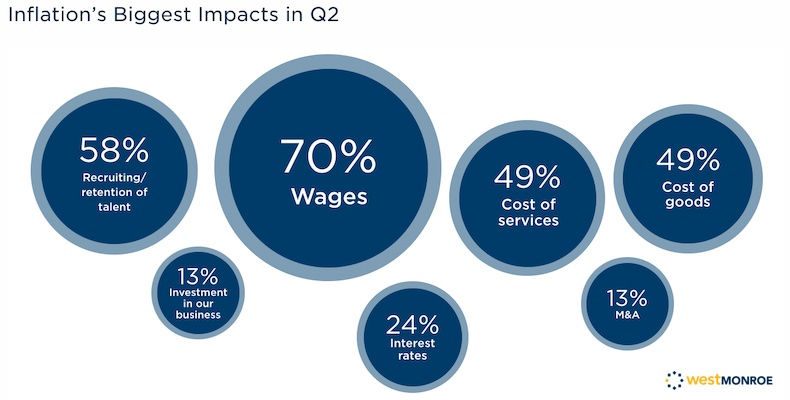
Respondents say they are struggling to recruit talent at all levels. Recruiting front-line workers and back-office workers is most difficult.
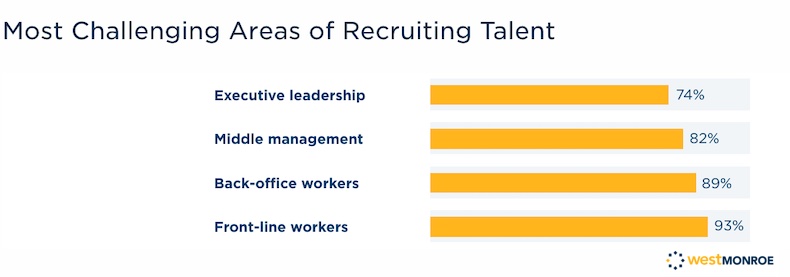
C-suite executives say their biggest struggles with hybrid work are maintaining a company culture (70% cite) and bringing employees back on-site (56% cite).
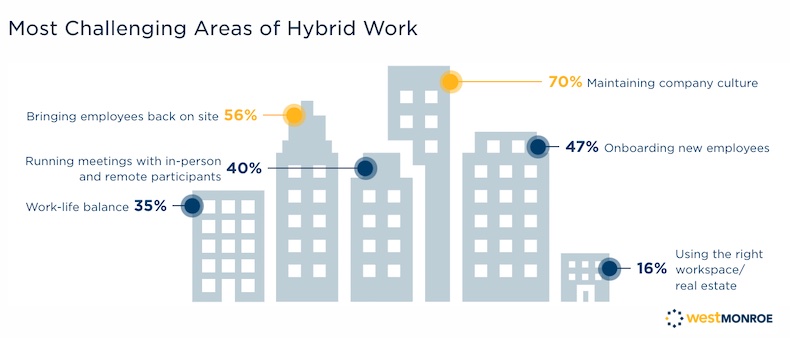
About the research: The report was based on a quarterly poll of at least C-Suite executives. This edition of the poll was conducted between April 22-30, 2022. To be included in the survey, respondents need to have a C-level title
Read the original article from Marketing Prof
Email Subject Line Benchmarks for Common Tactics and Words
How does including personalization, adding emojis, and using common words impact email subject line performance?
To find out, GetResponse examined nearly 7 billion emails sent by its customers in 2021. Only messages sent by active senders with more than 1,000 contacts were included in the analysis.
The researchers found emails that include personalized elements in their subject lines actually underperform nonpersonalized emails, on average. That holds true across multiple metrics, including open rate, clickthrough rate, and unsubscribe rate.
Emails that include emojis in their subject lines have a lower average open rate and clickthrough rate compared with those that do not include emojis.
Including common words in email subject lines such as "video", "infographic", and "free" tends to have a mixed impact on performance. It has a positive impact on some metrics and a negative impact on others.
About the research: The report was based on an analysis of nearly 7 billion emails sent by GetResponse customers in 2021. Only messages sent by active senders with more than 1,000 contacts were included in the data set.
Using Fiction to Find Your Strategy

By force of habit, most executives tune down their imagination when strategizing. This is counterproductive, the authors argue. Instead, they offer an alternative: Design fiction. A design technique that immerses executives and employees deeply in various possible futures, it uses artifacts such as short movies, fictitious newspaper articles and imaginary commercials to generate transformation roadmaps. Rooted in the future but helping to act in the present, design fiction results in concrete actions taken to adjust companies’ visions, strategies, and activities to create a better future.
Trying to predict what the future will look like is doomed to fail. Yet this is what most executives do when they strategize. They — we — do this because we have been trained and educated to use trends and statistics to predict what is likely to happen and prepare accordingly. As a result, companies struggle to react to changes in their environments when they should be shaping them proactively. This is an issue for executives around the globe whose strategizing, anchored in the past, misses out on important opportunities to envision, and design, possible futures.
Over the past seven years in working with about 50 executive teams around the world, we’ve been experimenting with an alternative approach to strategy: design fiction. Design fiction is a technique that immerses executives and employees deeply in various possible futures, and uses artifacts such as short movies, fictitious newspaper articles, and imaginary commercials to generate transformation roadmaps.











